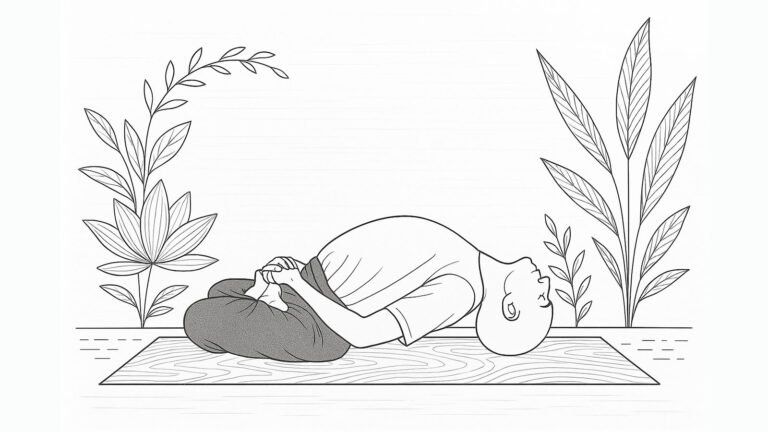— Introduction :
In the realm of yogic postures that merge strength, balance, and stillness, Lolasana, the Pendant Pose, stands as a vibrant symbol of internal mastery and energetic control. Rooted in the Sanskrit word “lola”, meaning dangling, swinging, or moving like a pendulum, this asana is deceptively simple in appearance yet profoundly powerful in effect. Though it begins from a seated position like Padmasana or Vajrasana, Lolasana quickly shifts into a dynamic arm-balance, requiring the practitioner to lift the entire body off the ground using pure core activation, shoulder stability, and concentrated awareness.
Lolasana awakens the Manipura Chakra—the center of vitality and transformation located at the navel—and draws the yogi’s focus inward through the effort of remaining suspended. It is not just a posture of muscle; it is a dance of inner poise, of becoming light while grounded, of becoming free while bound. By engaging breath, bandhas (energy locks), and balance, the practitioner enters a state of meditative stillness in motion. In ancient traditions, such balancing poses were considered tools for cultivating inner fire (tapasya) and penetrating the layers of ego through bodily discipline. Lolasana, thus, is more than an exercise—it is a spiritual stance of readiness, resilience, and refinement.
— Step-by-step Instructions :
- Sit in Padmasana or Vajrasana if full lotus is not accessible.
- Place both palms flat on the floor beside the hips, fingers pointing forward.
- Take a deep breath in, engage the core and pelvic floor muscles.
- On exhalation, press the palms down and lift the entire body off the floor using arm and abdominal strength.
- Let the body dangle or swing slightly, keeping the knees close to the chest and spine upright.
- Hold the position for 5–10 seconds (or more with practice), breathing gently.
- Slowly lower the body back to the floor with control.
- Relax and repeat 2–3 times.
— Physical And Mental Benefits :
- Strengthens arms, wrists, shoulders, and core muscles
- Tones abdominal region and stimulates digestive fire (Agni)
- Improves body control, balance, and awareness
- Enhances focus, willpower, and inner steadiness
- Builds energy around Manipura Chakra (navel energy center)
— Precautions to Keep in Mind :
- Avoid if you have wrist injuries, hernia, shoulder pain, or weak abdominal muscles
- Not advisable during pregnancy or menstruation
- Beginners should not force the body into full lift; use blocks or props if needed
- Elderly practitioners or those with high blood pressure should perform under guidance
— Beginner’s Tips :
- Start with Vajrasana or cross-legged sitting if Padmasana is not accessible
- Use yoga blocks under the palms for height and support
- Focus on engaging the abdomen rather than lifting high
- Practice wrist and core strengthening poses regularly (like Plank, Chaturanga)
— Best Time to Practice :
- Early morning on empty stomach is ideal
- Can also be practiced in evening before dinner
- Always warm up wrists, arms, and core before attempting
— Advanced Variations :
- Eka Pada Lolasana – lift with one leg extended
- Lolasana from Dandasana – done from Staff Pose with legs together
- Flow transition from Lolasana to Chaturanga or Bakasana
— Wrapping Up :
Lolasana is a powerful yogic challenge that invites strength, stillness, and balance. Though it may seem difficult at first, with patience and awareness, it becomes a beautiful expression of control and energy. As the body lifts effortlessly, it reflects the yogic principle of lightness — both physical and mental. In Lolasana, we don’t just rise above the ground; we rise above limitation.


